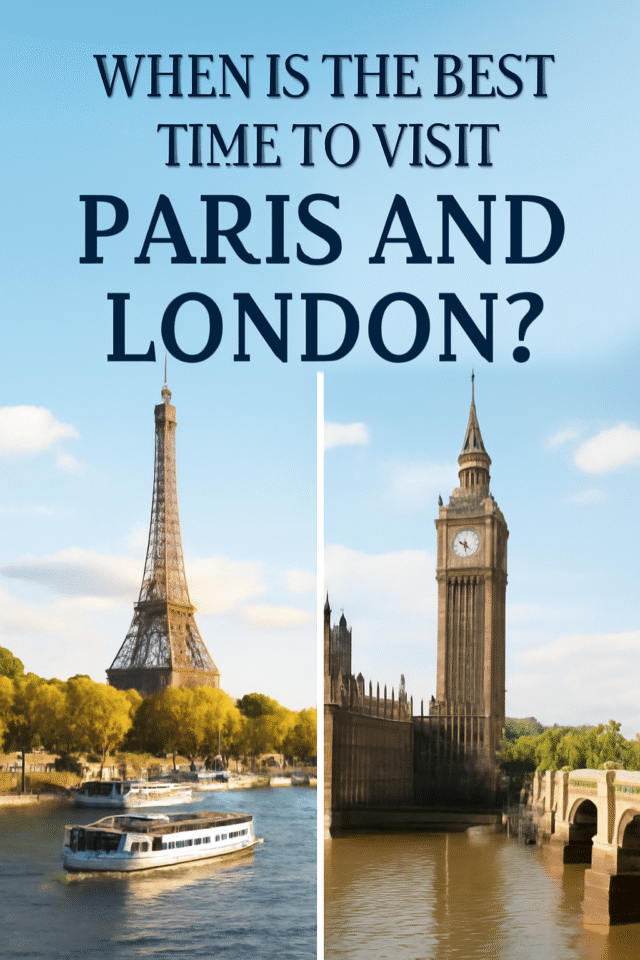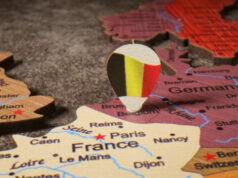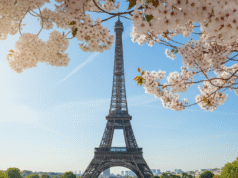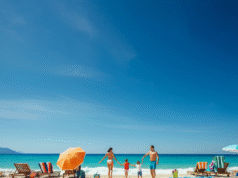When is the best time to visit Paris and London? Paris and London, two of the world’s famous cities that have been known for their beauty, are a dream spot for any tourist. Both Paris and London have so much to offer It’s hard to choose between all the fun and romance of Paris or the rich history and culture of London – there’s just so much to see, do and remember! But the timing of your visit to these cities can make a big difference in what kind of experience you’ll have, from the weather to how crowded it will be and what special events are happening.
In this post we will look at the optimum times to visit both Paris and London, looking at considerations such as weather, events, budget, and crowd sizes. Whether you are visiting Paris and London for the first time or are an experienced traveler, understanding the best time to visit Paris and London can make all the difference in your trip.
1. When is the Best Time to Go to Paris?
As we all know, Paris is synonymous with chic & beautiful gothic architecture, world famous art collections (yes, including the Mona Lisa – sigh) & oh-la-la, the food. Whether you’re coming for the Eiffel Tower, a walk along the Seine River or simply to eat your weight in amazing French pastries, timing is everything for visiting Paris – it will make or break your trip.
Spring (March-May): For Mild Climate and Blooming Gardens
Spring is one of the best times to visit Paris—and for good reason. Weather is pleasant, with temperatures hovering between 10-18C and ideal for walking through the city. The parks and gardens come to life as the trees and flowers burst into bloom in a riot of colour.
Spring is also the start of tourism season which will have much less crowds than summer (go in March or April). You can even take a peaceful stroll in the Tuileries Gardens or chill in the Luxembourg Gardens without getting beat up by the masses. Yes, the weather is nice enough to productively visit the outdoors great city: You can take a boat along the Seine or visit Montmartre.
And in the spring, you have Paris to look forward to and for fashion lovers – Paris Fashion Week (February or March) – where you can catch all the latest looks from around the globe and you might even spot a celeb or two! But that also means that that some parts of the city, such as the chic neighborhoods surrounding Le Marais, can expects to be busier during this time. For most travelers, however, spring is the sweet spot: You’ll hopefully have the best of both worlds, with reasonable weather and manageable crowds.
Summer (June through August)
Hot and High Tourist Season The warm middle months of the year make for perfect sunbathing weather, but you can expect to find the whole city packed with tourists.
Paris in the summer is hot, typically reaching 25-30 (77-86). “In fact, it is a delightful time to be in the city, bursting with outdoor festivals, concerts, and vibrant sidewalk cafes. But, then, it’s also the high tourist season, and so the Louvre, the Eiffel Tower and Notre-Dame Cathedral will also house bigger-than-usual crowds.
The longer days mean you can roam the city well into the evening and outdoor cafes and terraces are perfect for an aperitif or dinner as you watch the people go by. There is plenty of life on the streets and in the parks of Paris, and several outdoor events — such as the Paris Jazz Festival and Cinema on Plein Air, which will allow you watch classic films al fresco — to take advantage of.
That’s not to say that visiting Paris in the summer is always perfect — it can be crowded and pricey. Hotel rates go through the roof, and long queues at the most popular attractions can be a given. The city also has some heat waves, so outdoor activity can be a little uncomfortable. If you can stand the heat and crowds, summer is a great time to take in the city’s lively atmosphere, but be prepared to elbow your way through the busy streets and tourist-clogged locations.
Autumn: September, October, November —
Mild Weather, Less Crowded Even cooler than spring with an average temperature of about 50°F (10°C), autumn is another nice time to visit London.
Autumn is also one of the best times to visit Paris if you want to avoid the crowds. The temperatures start to drop and average from 11-18°C (52-64°F), which is great for sightseeing. The autumnal hues of Parisian parks and gardens are gorgeous – the city is transformed into a rich explosion of reds, oranges and yellows, in none more so than the Bois de Boulogne and Tuileries Gardens.
September and October are quieter months compared to the summer, but still with many hordes around. The time of year also sees cultural events, like Nuit Blanche an all-night arts and culture event that takes place on the first Saturday in October. The Paris Autumn Festival also has live performances, art exhibitions and theater.
While November can be cold and rainy, it’s a fabulous time to enjoy Paris without the crowds of tourists. During this period, hotels reduce their price so you should find that this is cheaper for those that are watching the costs. If you’re seeking a serene, culture-filled Parisian getaway, the autumn is the ideal time for a visit.
Winter (Dec–Feb Winter): Cold and Magical
Winter months in Paris are chilly with average temperatures ranging from 3°C to 8°C (37°F to 46°F), and sub-zero temperatures here and there. Paris doesn’t get heavy snow — the city can be damp, and occasionally has a few rainy days. But winter in Paris has its own beauty, fewer tourists to contend with and less of a queue at most major sights for a more relaxed, close-up view.
December is particularly magical, when the city is decked out in festive lights and decorations. It is worth visiting the Christmas markets, in particular the Champs-Élysées market. You can also indulge in seasonal treats such as mulled wine and roasted chestnuts. If you like exploring in a quieter environment, this is a great time to go to museums and galleries without crowds.
January and February are the coldest months of the year, and many Parisians go on holiday, so you can visit the city’s famous cafes, art galleries and monuments without a crush of other visitors. If you can handle the cold, winter Paris provides a peaceful, almost romantic alternative to the city.
2. When to go to London?
Similar to Paris, London is a city rich in history, culture, and the arts. From magnificent Buckingham Palace to the sighs of the Tate Modern, London’s collection of sights and things to do is enough to see a person through year-round. But what is the best time to visit London?
Spring (March – May): Pleasant Weather, Festivals in Air
Spring in London is like Paris, the spring weather is pleasant, and flowers begin to flower. The average temperature will vary between 8°C (46°F) to 15°C (59°F). It’s a wonderful time to explore London’s outdoors including Hyde Park, Kew Gardens and Regent’s Park, which bloom with flowers and foliage.
London’s cultural season typically begins in March, featuring world attention dates such as the London Fashion Week (that occurs in February or in March). In April, the iconic Chelsea Flower Show is a sight to behold for those with green fingers. It is also the time of year when many of the city’s parks and gardens are in full flower, so May is a great time for nature enthusiasts.
Spring – It is also relatively less crowded than during the summer months, meaning you can enjoy exploring the city without fighting through hordes of tourists at popular spots. The weather is perfect for sightseeing, and hotel rates are still cheap.
June – August – warm weather and the tourists but hey, the heather’s out!
Summer in London is quite tepid, with temperature from 15 °C to 25 °C (59°F to 77°F). London isn’t as scorching as many other European cities, but summer is undeniably London’s tourist peak. Big events such as the Proms (a classical music festival), the Wimbledon tennis tournament and Notting Hill Carnival bring visitors from right around the globe.
Summer is the season for Londoners to get outside, with picnics in the park and concerts in the open air. But it’s also when the most tourists descend on the city. Anticipate long lines at big draws, including the Tower of London, the British Museum and Buckingham Palace. Prices at hotels are at their peak, and some parts of the city — like Covent Garden — can be crowd.
Loads of people, but summer is a great time to visit if you’re looking for that classic London vibe and outdoor summer events and festivals in the city. The longer days bring more hours of daylight to explore, and the warm evenings are ideal for a leisurely ramble alongside the River Thames.
Less Crowded (September to November)
It is lovely to visit London in the autumn, as the city starts to lose the heat and the masses begin oozing back to the provinces. The temperatures are between 9c and 16c (48f and 61f), are ideal for outdoor activities. The fall foliage in London’s parks, including St. James’s Park and Hampstead Heath, only enhances the city’s appeal.
But these coming months — September and October — are less crowded, and the weather is still nice enough for sightseeing. The London Design Festival also occurs in September and is a heaven send for those that love design and architecture. Furthermore, autumn is an opportunity to witness London’s renowned taverns and quaint cafes, without the crazy summer crowds.
November is the slowest month, it’s cooler and sometimes rainy, but can be a great time for budget-mind travelers who don’t want to be overwhelmed by crowds. The city’s holiday lights and decorations begin to be hung in November, providing an early preview of the Christmas cheer.
Winter (December through February): Cold, Celebratory and Enchanting
The weather can be a little chilly in London during the winter, though not what you might consider temperatures tend to range between 2°C and 8 °C (36 – 46 °F). Though it hardly snows, the fresh and bracing cold combined with the cheery stoplight glow makes London an atmospheric place to be. Oxford Street, Covent Garden and Regent Street are illuminate during Christmas season to make the city beautiful.
The Christmassy markets – Winter Wonderland in Hyde Park, for example – are a highlight of the season, with ice skating, seasonal snacks and lots of Christmas spirit. London is less crowded in the winter, which gives you the chance to visit some of the biggest attractions such as the British Museum, or the Houses of Parliament in peace.
It’s the coldest in January and February, but even chilly temps keep some travelers away, meaning those who don’t mind a bit of cold get to experience London at its quieter, cozier best. Hotel rates are generally cheaper, which makes winter a great option for budget travelers.
Conclusion: What Time of Year to Go to Paris and London
When is the best time to visit Paris and London? If you like cooler weather and fewer masses, spring and fall are great times to visit. If you like a lively atmosphere and outdoor events, Summer will suit you best. The winter is undoubtedly nippier, but also a lot calmer and more magical – especially at Christmas.
Whether you’d be arriving in Paris or London, each city is spectacular regardless of the season. Because will be able to plan your travel based on the time of year that best suits your tastes, so that the charm, the history and the culture of these 2 incredible cities become part of you.









